Surely, This Is the Year Purdue Finally Breaks Through … Right?
Matt Painter is sitting in his Purdue basketball staff room with a whiteboard full of press offense diagrams and an unopened carry-out container of chicken tenders in front of him. Attacking both is on his afternoon agenda. But first, he is rooting through his backpack for the tools of his obsessive trade.
Out comes a Dry-Erase clipboard that accompanies him to home and office, because you never know when X-and-O inspiration may strike. And then out comes a zippered notebook that contains sheaves of paper densely covered in words and numbers. It’s Rain Man writing streaked by a rainbow of highlighter colors, a window into Painter’s wonkish soul.
Your favorite basketball coach’s favorite basketball coach might be this guy. No one digs deeper into the tactical DNA of the sport than Painter.
In pursuit of the perfect play-calling system, Painter turned several years ago to the orderly complexity of football. He was among the first basketball coaches to have offensive and defensive coordinators, each assigned those specific responsibilities in preparing for the next opponent. And just as some college football teams use signboards to signal in plays, a Purdue assistant writes the next offensive set on a handheld whiteboard and flashes it to the players as they head upcourt.
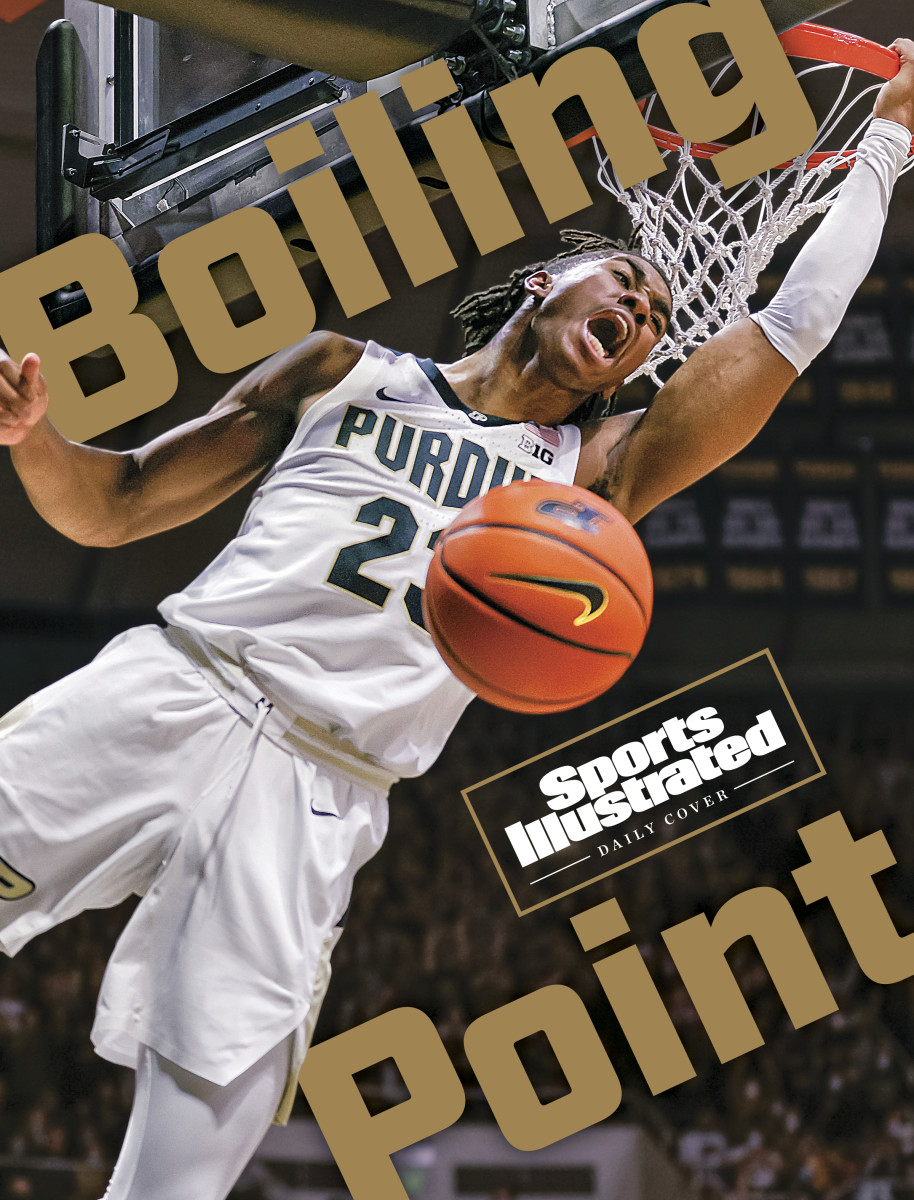
The immense playbook is distilled to roughly 20–25 sets per game, and that doesn’t include an array out-of-bounds plays and other special situations. The Boilermakers put so many sets on tape that opponent scouting reports could be thicker than Dostoevsky novels. “They have a bazillion plays,” says Big Ten Network and ESPN analyst Robbie Hummel, a former Purdue standout. “They have sets, they have counters, they have counters to your counters. Some of the stuff he runs is as good as any in the country.”
The play names can be a verbal buffet—Pro 254 Snap 4 Reverse 5 Back Husky 3 Oh No 5 is a sample—but each player needs to digest only a morsel of it, as his specific assignment is encoded somewhere within that ramble. When those assignments are carried out well, the result tends to be two or three points for Purdue. The Boilermakers are a symphony of complementary weaponry, entering the NCAA tournament as the third-most most efficient offensive team in the country, according to Ken Pomeroy’s advanced metrics
“I’m trying to make it impossible for people to know what’s coming,” Painter says.
But in a larger sense, everyone knows what’s coming with this Purdue program. They’ve seen it all year—seen it for many years, really. Decades, in fact. Here comes the Big Dance, and a big chance, but there is hope habitually tethered to heartbreaking fatalism. There is so much scar tissue attached to Boilermaker limbs (a knee here, an elbow there) and psyches over the years.
Rummaging through that pile of papers, staring at that whiteboard, scouring his beautiful mind, Matt Painter is searching for the perfect play at the perfect time. The one that finally sets Purdue free from 42 years of angst since its last Final Four appearance in 1980. Maybe even the one that produces its first national title. This team climbed to No. 1 in December in both the AP and coaches polls—the first time in school history—but the stretch run to March has become a slog as the Boilermakers confront their defensive weaknesses and try to fix them in time.
It would be a grand karmic twist if this team, of all teams, breaks through. In some important ways, it bears little resemblance to all that Boilermaker basketball was built upon for four decades. But maybe it takes a dramatic departure to have a cathartic arrival.
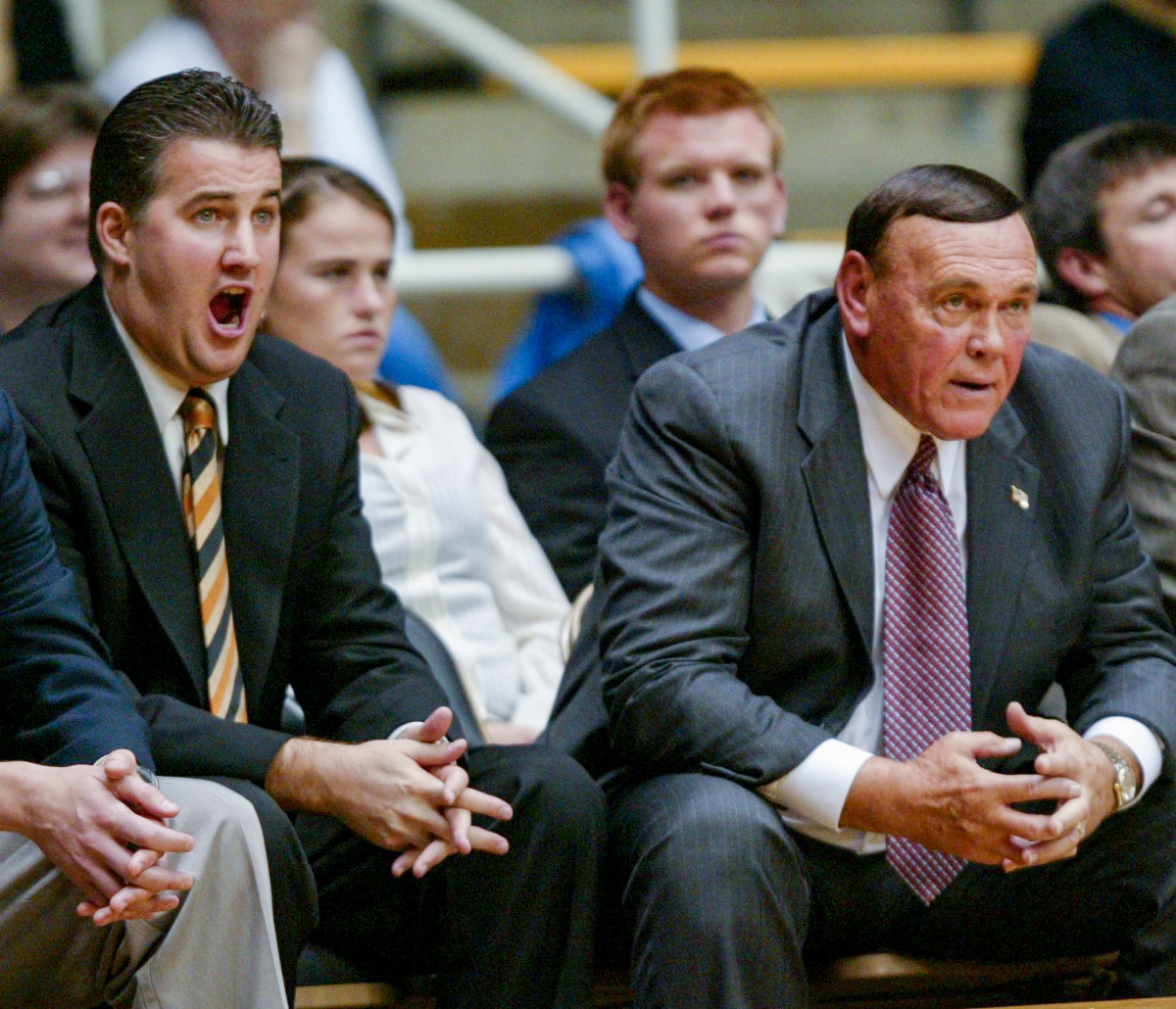
A case can be made that Purdue is the college basketball version of Georgia football—a perennial winner possessing every necessary characteristic of a champion, yet somehow perpetually failing to take the last step. Before this past season, the Bulldogs’ last moment of great glory on the gridiron was 1980. That’s also the last year the Boilermakers reached the Final Four, the second of just two in program history.
Purdue has never won a national championship in the NCAA tournament era. There is a Helms Foundation title in the prehistoric days of 1932, when the Boilermakers were led by a wiry guard named John Wooden, but that’s it. They played in the title game in ’69, led by shooting sensation Rick Mount, but that team was predictably routed by juggernaut UCLA.
The gaps in the trophy case at a place this successful do not compute. Purdue has won or shared 24 Big Ten regular-season titles, more than any other school in the nation’s oldest Division I conference. It has won 1,882 games, surpassed by only 12 other schools in history. Of those 12, only three others have not won an NCAA tourney title: Temple, Notre Dame and St. John’s. Temple has faded from relevance; Notre Dame has historically focused on football; St. John’s hasn’t been a factor in more than two decades.
But Purdue? The Boilermakers have never left the sport’s upper echelon. Aside from some lean years in the 1940s and ’50s, they have been consistent winners. They have been highly ranked. They have had great coaches and players. They have a passionate fan base that turns Mackey Arena into one of the great venues in the country on cold winter nights.
They care about football, but this is primarily a basketball school in basketball country, and it has been since nearly the dawn of basketball time. West Lafayette is part of a fertile crescent in northwest Indiana, where high school basketball first gained popularity more than a century ago and with the first eight winners of the fabled state tournament all coming from that area. In modern times, the Purdue campus is ideally situated between the talent hotbeds of Indianapolis and Chicago.
Yet since 1980, eight other current Big Ten members have reached Final Fours and seven of them more than once. That prominently includes Indiana, whose five NCAA titles and eight Final Fours only reinforce the history of March Sadness in West Lafayette. Even little old Butler, in Indianapolis, has been to two Final Fours since Purdue last went.
Twists of fate, tears of ligament, an opponent’s epic play or outright black-and-gold flops —all have been factors in this prolonged drought. “To get to the Final Four, you have to be lucky,” Hummel says. “And Purdue has not been lucky.”
The most unlucky development in Purdue’s history of futility was likely Hummel’s right knee. The 2010 Boilermakers were built around a core of gifted juniors from the state of Indiana: guard E’Twaun Moore of East Chicago, big man JaJuan Johnson of Indianapolis and wing Hummel of Valparaiso. They were Painter’s first big recruiting class, getting better every year: 25 wins and a round-of-32 NCAA appearance as freshmen; 27 wins, a Big Ten tournament title and Sweet 16 run as sophomores; then a 14–0 start and a top-25 ranking that rose as high as No. 3 in late February.
“We broke every huddle that year with, ‘Final Four!’” Hummel recalls. It was the overriding focus, and an increasingly attainable goal until a game at Minnesota on Feb. 24.
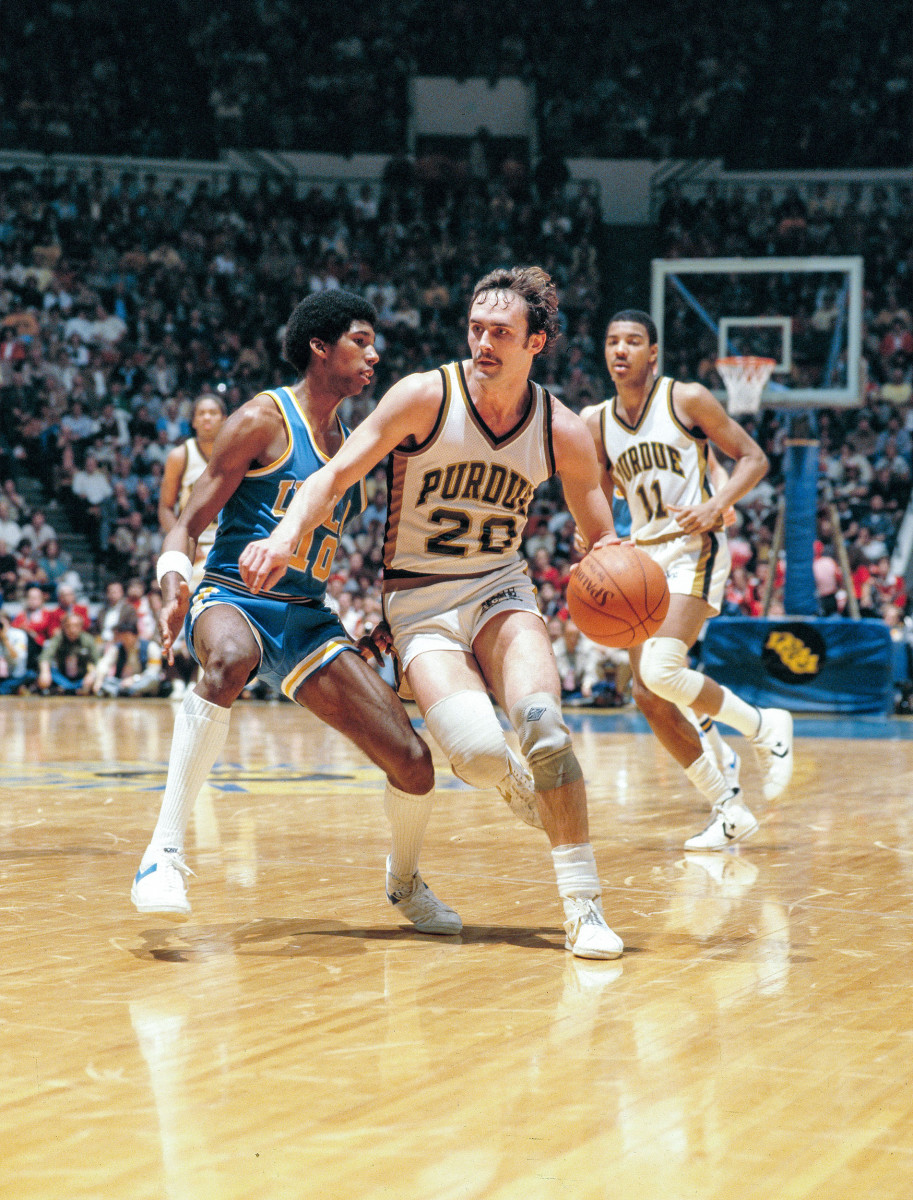
In the first half, Hummel drove to the basket and felt his right leg buckle. “It felt like my leg blew up,” he says. “I honestly thought I broke my leg.” But after being helped to the locker room, the pain dissipated and Hummel told the Purdue medical staff he thought he could return to the game. They quickly dispelled that idea, and it became clear the injury was major.
Purdue eked out the victory but lost Hummel, who was averaging 16 points and seven rebounds a game, for the season to a torn ACL. The Boilermakers were never the same after that, winning the Big Ten regular season but being routed in the semifinals of the league tourney and then losing in the Sweet 16 to eventual national champion Duke. The following year, Hummel reinjured the knee on the first day of practice and wound up missing the entire season.
“It was all kind of set up for that junior year,” Hummel says. “The hard part is that we don’t even know how good we could have been in the tournament. I’d rather be Virginia losing to UMBC [in the 2018 NCAA tournament] than not getting to know.
“It was really disappointing. It’s still disappointing.”
The other two great disappointments of the Painter era were 2018 and ’19. In ’18, 7'2" center Isaac Haas broke his elbow in a first-round NCAA tournament victory. Without its No. 2 scorer and rebounder, the second-seeded Boilermakers were beaten in the Sweet 16 by Texas Tech. The next year, Purdue was five seconds from the Final Four before being undone by the greatest pass in tournament history.
The scene: Carried to the brink of deliverance by a heroic performance from guard Carsen Edwards, Purdue led No. 1 seed Virginia 70–67 in the regional final in Louisville. A missed free throw by 70% shooter Ryan Cline with 17 seconds remaining left the door open just a smidge for the Cavaliers, but 12 seconds later the Final Four was close enough for the Boilermakers to touch it.
Painter played it by the book, fouling to avoid giving up a tying three-pointer and putting Cavaliers guard Ty Jerome on the foul line. Jerome made the first but missed the second—not on purpose, just short-arming it enough that the ball caromed to where Virginia big man Mamadi Diakite could tip it backward.
Too far, it appeared, at that moment. The massive Purdue crowd in the Yum Center sensed victory as the ball bounced passed half court, figuring time would expire before Virginia could get off a decent shot. But guard Kihei Clark ran down the loose ball, took two dribbles and then—to the shock of everyone who expected him to launch a shot—whipped a pass back to Diakite. He caught it and shot it in almost one motion, arching a 10-footer over 7'3" Matt Haarms that tied the game at the buzzer.
“A one-in-a-million play,” Hummel says. “Most point guards would just fire a half-court shot instead of firing a perfect pass.”
Virginia won in overtime, on the way to a breakthrough national title after the historic first-round ouster against UMBC the year before. Edwards scored 42 points and averaged 34.8 in the tournament, but a missed three and a turnover in the final 10 seconds of OT helped the Cavaliers escape and make their own history.
Purdue slumped in 2020 and would not have made the NCAA tourney without winning a Big Ten tournament that was canceled by the COVID-19 pandemic. Last year, gifted with an entire tourney down I-65 in Indianapolis, the Boilers flopped in a first-round upset loss against North Texas as a No. 4 seed. Those developments only sharpened the regret of Virginia swiping the Final Four from them in ’19.
But when asked which March development has been the most painful, Painter doesn’t hesitate.
“The Hummel injury,” he says. “He deserved to be able to finish that season. We didn’t do anything wrong in any of those situations. What beats you up as a coach is when you make mistakes that cost you a game. People don’t realize how much disappointment you have when you coach.”
If anyone knows about black-and-gold disappointment, it’s Painter’s former coach, mentor and predecessor, Gene Keady. He’s the most accomplished coach in Purdue history, winner of a school-record 512 games, a seven-time Big Ten Coach of the Year and a current finalist for the Basketball Hall of Fame. But his March record is steeped in underachievement.
“[Jaden Ivey] the most talented guy I’ve coached. I didn’t see Ja Morant or Russell Westbrook at 19, but they must have looked like that.’
In 14 NCAA appearances from 1983 to ’98, Keady never had a team go farther than its projected seeding. Only three times in that stretch did Purdue even get as far as projected, in ’83 (second round), ’93 (first round) and ’97 (second round). Eleven times, the Boilermakers fell short of expectations, including as No. 1 seeds in 1994 and ’96. The ’94 team was No. 3 in the nation heading into the tournament, riding superstar Glenn “Big Dog” Robinson. His 30.3 points per game led the nation and to this day remains the highest D-I men’s scoring average in the past 30 years. But the Boilers ran into Grant Hill and Duke in the regional final and were dismissed. The ’96 team was upset by Georgia in the second round.
It wasn’t until the latter stages of Keady’s career that he finally had some tournament overachievers, in 1999, 2000 and ’03. The ’00 team flirted with the Final Four as a No. 6 seed by reaching the regional final. Unfortunately for the Boilermakers, nemesis Wisconsin was waiting for them there after the West Region bracket collapsed. It was the fourth meeting of the season between the two, and the No. 8 seed Badgers won for the third time, 64–60. Had that team made it to the Final Four, the path to a title was not prohibitive. Purdue would have faced Michigan State in the semifinals, a team it beat in February, and a potential matchup with Florida in the title game. The Boilermakers had beaten the Gators by double digits on a neutral court earlier in the season.
That was Keady’s last good chance before stepping away in 2005. Painter, who played for Keady and coached under him, was the logical successor, even at age 34. He’s compiled an even better winning percentage than Keady but has never strung together four straight victories in an NCAA tournament.
“It surprises me and disappoints me that it hasn’t happened since 1980,” Keady says of the drought.
Maybe this is the team that ends it.
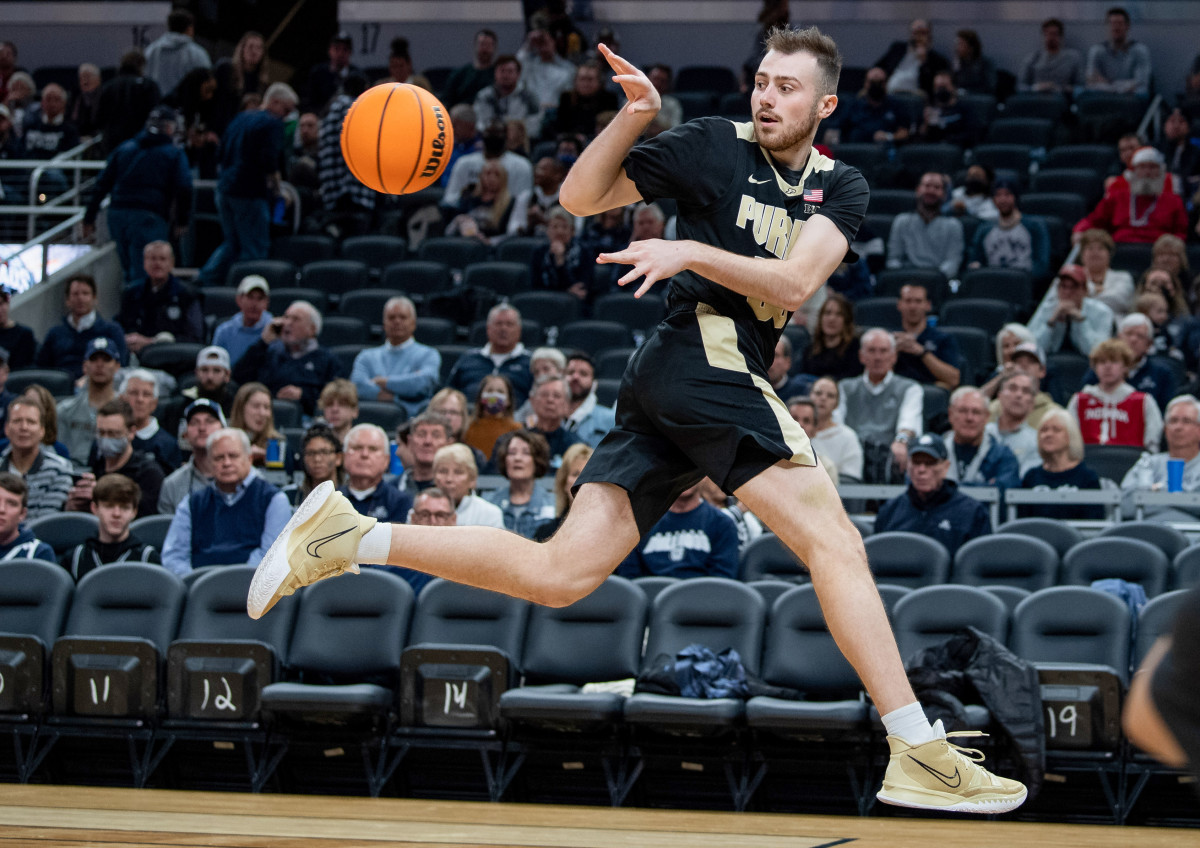
When Matt Painter was growing up in Muncie, Ind., the base of his driveway hoop was hit by the milkman’s truck and left it bent. He kept shooting on it, anyway, because this was Indiana and shots must be launched. But one day, he came home to find concrete being poured in the backyard for a spacious new court equipped with floodlights for shooting at all hours.
“It’s all I ever did,” Painter says.
When bouncing the ball on that court, Painter never dreamed of being a Purdue Boilermaker. His sights were set on Indiana. His dad, Mike, traveled to Philadelphia in 1976 and ’81 to see the Hoosiers win national titles and took Matt with him to New Orleans in ’87 to see the last of Bob Knight’s three.
But when it came to recruiting, Knight didn’t reciprocate Painter’s ardor. There wasn’t much initial interest out of Bloomington in the skilled but slow-footed guard at Delta High School, and Keady made a strong impression on a family of Hoosiers fans during his home visit. After that, Painter’s dad opined it might be time to stop holding out for late interest from Indiana and take what Purdue was offering.
“Bobby Knight usually had the inside track on kids,” Keady says. “But I think Matt’s dad had something to do with it.”
Once Painter traded in his candy-stripe dreams for Purdue black-and-gold, he still needed some convincing early in his tenure that Keady was the right fit for him. Keady recalled hearing Painter went home during his redshirt season and voiced his doubts, to which his father told him to “shut up, go back there, do what he says and it’ll be O.K.”
Painter was a role player until his senior season, when he was named team captain and played 30 minutes a game. By then, it was abundantly clear his career choice would be coaching. Painter says he had already been chiming in during timeout huddles and telling teammates what they should be doing, so the next step was putting on a suit and doing it for a living.
His first job was as an assistant coach in 1993 at Division III Washington & Jefferson, where the pay was so meager that Painter did some work as a forklift operator for extra cash. He eventually hooked on with Bruce Weber, who had been an assistant at Purdue during Painter’s playing days, at Southern Illinois. When Weber got the Illinois job, Painter became the SIU head coach. He went 25–5 and earned an NCAA bid, and then was wooed back to his alma mater as the successor-in-waiting during Keady’s final season.
For years, Purdue basketball under Painter looked a lot like Purdue basketball under Keady—blue-collar, burly players specializing in relentless defense. It worked well. The Boilermakers had six straight 20-win seasons from 2007 to ’12, then five more from ’15 to ’19. But with Edwards lighting it up in ’17–18 and ’18–19, Painter’s teams began to demonstrate a greater offensive flair and firepower.
Painter studied football systems and did personality testing to improve his player evaluations. The deeper he went down the various rabbit holes of the game—strategy, recruiting, team chemistry, player development—the more he wanted to know. “He’s just a junkie,” says senior guard Eric Hunter. “Ask him what he’s thinking about at any random time and he’ll say, ‘Winning a Big Ten championship.’”
By any means possible, regardless of what adaptations need to be made. Somewhat antithetically, the guy who was a skilled guard as a player became a magnet for massive centers, signing 7-footer after 7-footer. From A.J. Hammons to Haas to Haarms to current postman Zach Edey, Painter has had some of the biggest big men in the game on his rosters.

With Edey and 6'10" Trevion Williams (whose weight loss from his freshman year made him a success story) sharing the center position, opponents must pick their poison. Double the big men and leave shooters open on a team that is the nation’s fourth-most accurate from three-point range? Or take your chances single-covering the post? There are no easy answers, and that’s before factoring in the third element of one of the best offensive teams in the country.
Jaden Ivey is, frankly, a Purdue outlier. He is the kind of free-flowing athlete this rough-and-tumble program has rarely had, an aerial artist amid bruising blacksmiths. The 6'4" sophomore, son of Notre Dame women’s coach Niele Ivey, has drawn comparisons to the greatest athletic anomalies in the game.
“You can compare Jaden Ivey to Ja Morant or Russell Westbrook, and it’s not an insane comparison,” Hummel says. “Glenn Robinson was special, but Jaden plays a more vertical game. He is a level of athlete Purdue never had. Ivey has probably had seven of the 10 best dunks in Purdue history this year.”
Says Painter: “He’s the most talented guy I’ve coached. I didn’t see Ja Morant or Russell Westbrook at 19, but they must have looked like that.”
Dunks, threes, ambidextrous drives—Ivey has a complete arsenal and absolutely wants the ball at crunch time. In a pitched battle at Wisconsin on March 1 with Big Ten title implications, Ivey overcame a night of struggles to score Purdue’s final seven points on two difficult drives and a tying three-pointer from deep—only to see the Badgers win it on a banked-in three. (Have we mentioned the fact that luck has not been on Purdue’s side?)
“To get to the Final Four, you have to be lucky, and Purdue has not been lucky.”
After Ivey shredded Illinois for 26 points in early February, Illini coach Brad Underwood put it succinctly: “One thing Matt has done of late, he’s quit screwing around. Give the ball to Ivey and get everyone out of the way. If anybody doesn’t know what a pro looks like, that’s what they look like.”
Ivey’s jaw-dropping improvement from freshman to sophomore seasons has him ticketed for the NBA draft lottery, likely as high as within the top-five picks. That adds some urgency to this season. Talents like him don’t come every year or, in Purdue’s case, every quarter century. Robinson was the No. 1 pick in the 1994 draft, and since then the Boilermakers have had 10 players selected, none of them higher than 26th.
“I think he’s the most talented player on the floor every time we play,” says senior guard Sasha Stefanovic.
A lot of people thought Stefanovic would never even get on the floor at Purdue. Some wondered what Painter saw in the skinny guard from Crown Point, Ind., but he might have seen himself. Both were overlooked by most other power programs. Both redshirted and worked on their games. Both possess an extremely high basketball IQ. “Sasha could coach our team,” Painter says of Stefanovic’s command of the endless playbook.
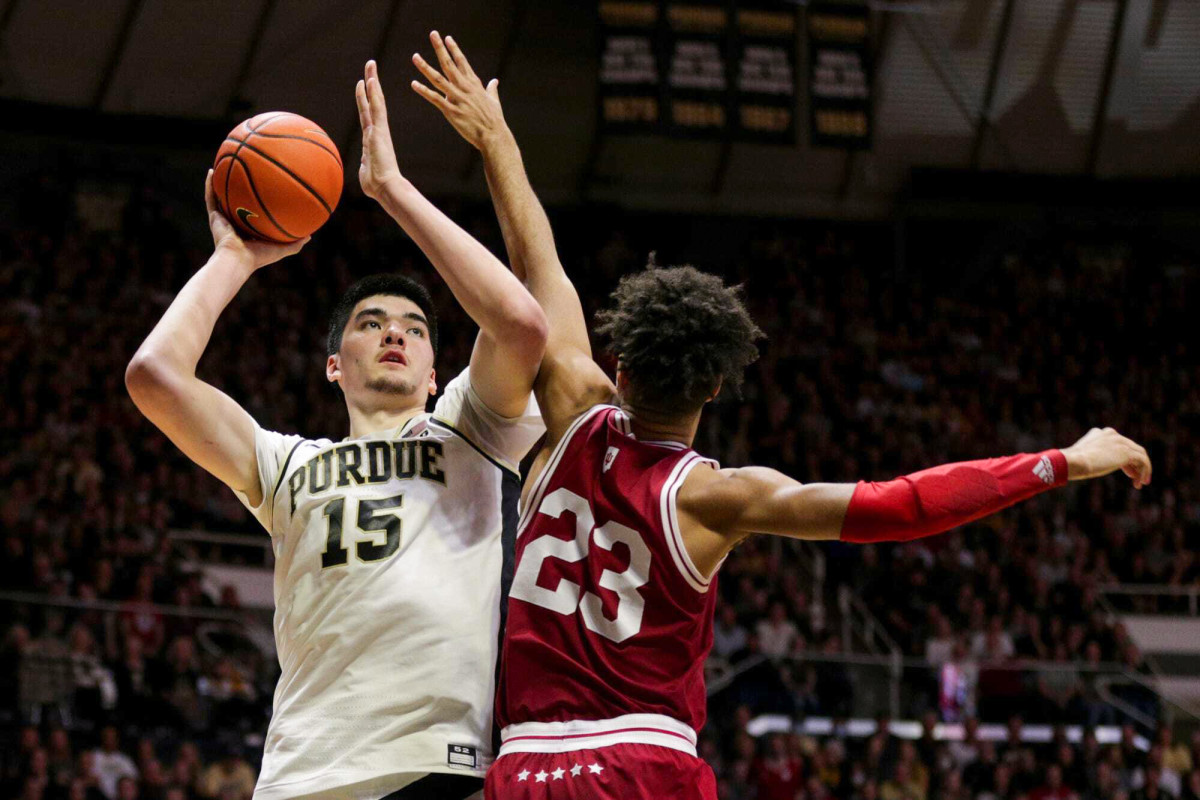
Stefanovic, Williams and Hunter were freshmen on the 2019 Purdue team that came within a perfect pass and last-second shot of the Final Four. That’s been in the back of their minds since, and it moved closer to front of mind as this team came together in offseason workouts and scrimmages. As the wins piled up, so did the expectations and hunger to capitalize.
But doubt was accrued as well. For as well as Purdue played at the offensive end, they have had some glaring deficiencies when it comes to stopping opponents. That contributed to losing the No. 1 poll ranking and sliding to ninth at the end of the regular season. Heading into the NCAA tournament, Purdue ranks 100th nationally in defensive efficiency, according to Pomeroy. Historically speaking, it is a prohibitively bad number for winning the national title or reaching a Final Four.
Can Purdue simply score its way to New Orleans? Or will it have to figure out how to guard in a hurry? The senior nucleus that felt the sting of a near miss against Virginia is a powerful motivating factor.
“It’s really difficult to win national titles or go to Final Fours,” Stefanovic says. “We had that taste of it in 2019, and we really want to get there.”
As a player and coach, Painter has spent a lot of time being awed by the energy in Mackey Arena. He has watched fans hunker down in a defensive stance for 10 straight possessions, trying to will the Boilermakers to make stops. He has seen the “Paint Crew” student section perfect its synchronized cheers. Conservatively speaking, it’s a top-five environment in the sport—all the time. He knows how much the fans want what so many of their Big Ten peers have received as the calendar flips from late March to early April. Four wins, one time. If you want to get greedy, maybe even six.
Like Keady before him, Painter has delivered consistent success. There has been no prolonged futility like Indiana has experienced. There have been no major sanctions like those handed down at Michigan. The school hasn’t had to fire coaches for underachieving nor seen them use Purdue as a springboard somewhere else.
“I understand how good Purdue has been,” Hummel says. “There’s a reason Purdue has won so many Big Ten championships. We’ve had really good teams. This team could be in the Final Four. Hopefully they can atone for [the disappointments]. I know it eats at the fan base. It eats at me.”
For about as long as anyone can remember, times have been really good. Certainly, times could always be worse. But just once, Purdue would like to experience the best of times.
More March Madness Coverage:
